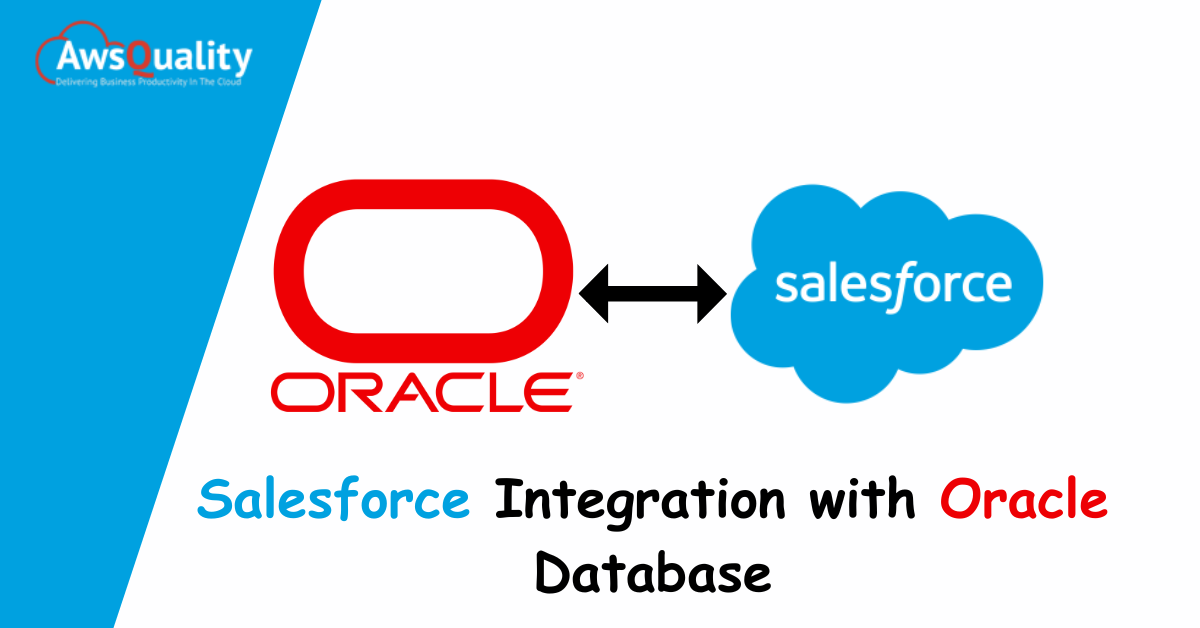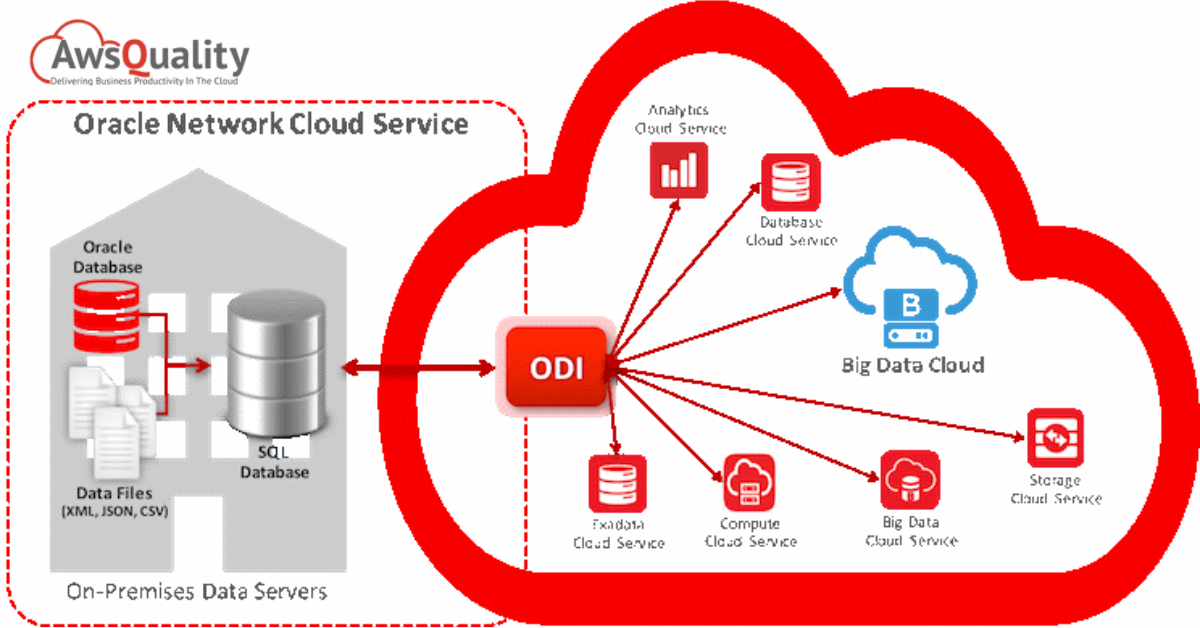
The industry standard for customer relationship management software is currently Salesforce. It eliminates the trouble of implementing and maintaining a large amount of software because it is a fully managed service. Lead management, account creation, order processing, and customer service are all tasks that Salesforce can perform. The reporting interface in Salesforce is yet another helpful feature that makes it easy for businesses to examine their collected customer data and provide insightful financial reports.
Because Oracle is one of the most widely used on-premise databases in business design, Salesforce frequently needs data from Oracle. In addition to offering a step-by-step solution to help you connect Oracle to Salesforce in a matter of minutes, this post intends to address all your questions regarding doing so.
Overview of Oracle
One of the most widely used on-premise relational databases, Oracle performs remarkably well across a broad range of workloads. Large data transactions, vast volumes of data, and much more can be handled easily. It is among the software with the shortest recovery times and highest levels of stability. Oracle is one of the most robust analysis tools on the market and a top choice for setting up ETL pipelines because of its querying solid layer.
Oracle offers a comprehensive set of tools to assist businesses in integrating data from diverse sources, performing data replication, and performing data transformation.
Overview of Salesforce
Salesforce is a cloud-based CRM platform that supports the management of client relationships within your company. The management of these connections provides a lot of data for Salesforce. Additionally, it provides cloud-based technologies, including IoT devices and data analytics. These produce data that offer priceless customer insights and can benefit the company.
How to link Salesforce and Oracle
You can Salesforce Integration with Oracle Database in a variety of ways and quickly upload your data to Salesforce:
Method 1: Importing data from Oracle to Salesforce using bulk Salesforce APIs.
To create, update, and programmatically delete certain records, Salesforce offers a set of APIs. The bulk APIs built on the SOAP architecture let you process many jobs at once by grouping them into batches. With this technique, you must first export your data from Oracle tables as CSV files before connecting to a contact object.
This can be accomplished by taking the following steps:
Step 1: Exporting data from Oracle as a CSV file
The following command can be used to export data as a CSV file:
The data will be printed using the following format using this command:
Step 2: Putting the ETL task to put data into Salesforce into place
After exporting your table data as a CSV file, you must now make a configuration file to access the Bulk APIs. The username and password combination needed to access the APIs will be contained in this file.
Make sure to format your file according to the following guidelines:
Using the curl command, log in by entering your credentials as shown below to access the APIs:
Save the session id with care; you’ll need it to run the ETL job. To start the bulk APIs, create another configuration file and save it as a text (.txt) file on your PC. The file can be created in the following format:
After setting up your settings and creating the necessary files, you can start the ETL process by using the curl command as shown below:
Save the job id carefully because you need it to run the ETL job.
You can extend your ETL job to include more batches using the following command. This will enable you to divide the data load into several batches and maintain performance:
Now, you can use the curl command below to determine the status of the ETL job:
A new XML file displaying the status of all batches will open once the process is finished. Your data has been successfully loaded into Salesforce if all batches have completed statuses.
This is how you use the Salesforce bulk APIs to load your data and Salesforce and Oracle Integration quickly. Observe the integration of Shopify and Salesforce as well.
Restrictions of this approach
Duplicate data management could be improved in bulk APIs. It will need several pre-processing tasks to convert the data into an appropriate format.
These ETL tasks must be carried out regularly by a specific schedule and data needs in a typical ETL scenario. For users, this task can take a lot of work.
With this approach, users must write numerous lines of code to carry out different API-based tasks. This can be difficult for consumers to accomplish daily and necessitates a solid understanding of using APIs.
Method 2: Importing data from Oracle to Salesforce via Oracle’s Integration Cloud
Oracle offers a cloud-based managed service called Oracle Integration Cloud to enable data loading from Oracle to other targets. The license for the Oracle Integration Cloud is costly, and it is a premium product. Oracle may be used to define pipelines, which can then be scheduled as repeating jobs.
This can be accomplished by taking the following steps:
- First, in the Oracle Data Integration Cloud, configure the adapter for your Oracle database. A database administrator will be needed to configure the adapter for you. To learn more about the Oracle database adapter, visit the official documentation here.
- You must now configure the Salesforce adapter after configuring the Oracle database adapter. Setting up the roles for action invocation and establishing the Salesforce connection attributes are required while creating the Salesforce adapter. You can refer to the official documentation here to understand the configuration settings.
- Create a pipeline using the Salesforce Oracle Integration interface and the Salesforce and Oracle adapters. Here are the specifics of this procedure.
You can quickly Oracle to Salesforce Integration using the Oracle Integration Cloud.
Restrictions of this approach
- Oracle EBS Salesforce Integration usage necessitates the purchase of a costly license.
- Lack of flexibility in data transformation before loading.
- The learning curve for Oracle Data Integration Cloud is exceptionally high, which makes it challenging for users to become used to the interface.
Method 3: Connecting Oracle and Salesforce via AwsQuality is a practical method.
In a hassle-free and automatic manner, AwsQuality enables you to transfer data straight from Oracle and several other sources to CRMs like Salesforce (Data Source Available for Free in AwsQuality), various SaaS applications, data warehouses, and much more. Without needing to write a single line of code, AwsQuality fully manages and entirely automates the process of importing data from your chosen source and enriching the data, and changing it into a form suitable for analysis. Due to its fault-tolerant architecture, data is handled securely, consistently, and without any data loss.
AwsQuality handles all your data preparation requirements, allowing you to concentrate on essential business tasks and gain much-powerful insight into increasing lead generation, keeping customers, and growing your company’s profitability. It offers a consistent and dependable way to manage data in real-time and ensures that your target location always has data ready for analysis.
Conclusion
This post will teach you numerous ways to Connect Oracle DB from Salesforce. Additionally, it gives you comprehensive knowledge of the ideas underlying each stage so that you can comprehend and use them effectively. However, these techniques might be complicated, especially for a beginner. This is where AwsQuality comes to the rescue. Without having to create the code repeatedly, AwsQuality enables you to transfer data straight from a source of your choice to a data warehouse, any SaaS application, CRMs, etc., in a fully automated and safe manner.
Know more about our Salesforce Integration Services













